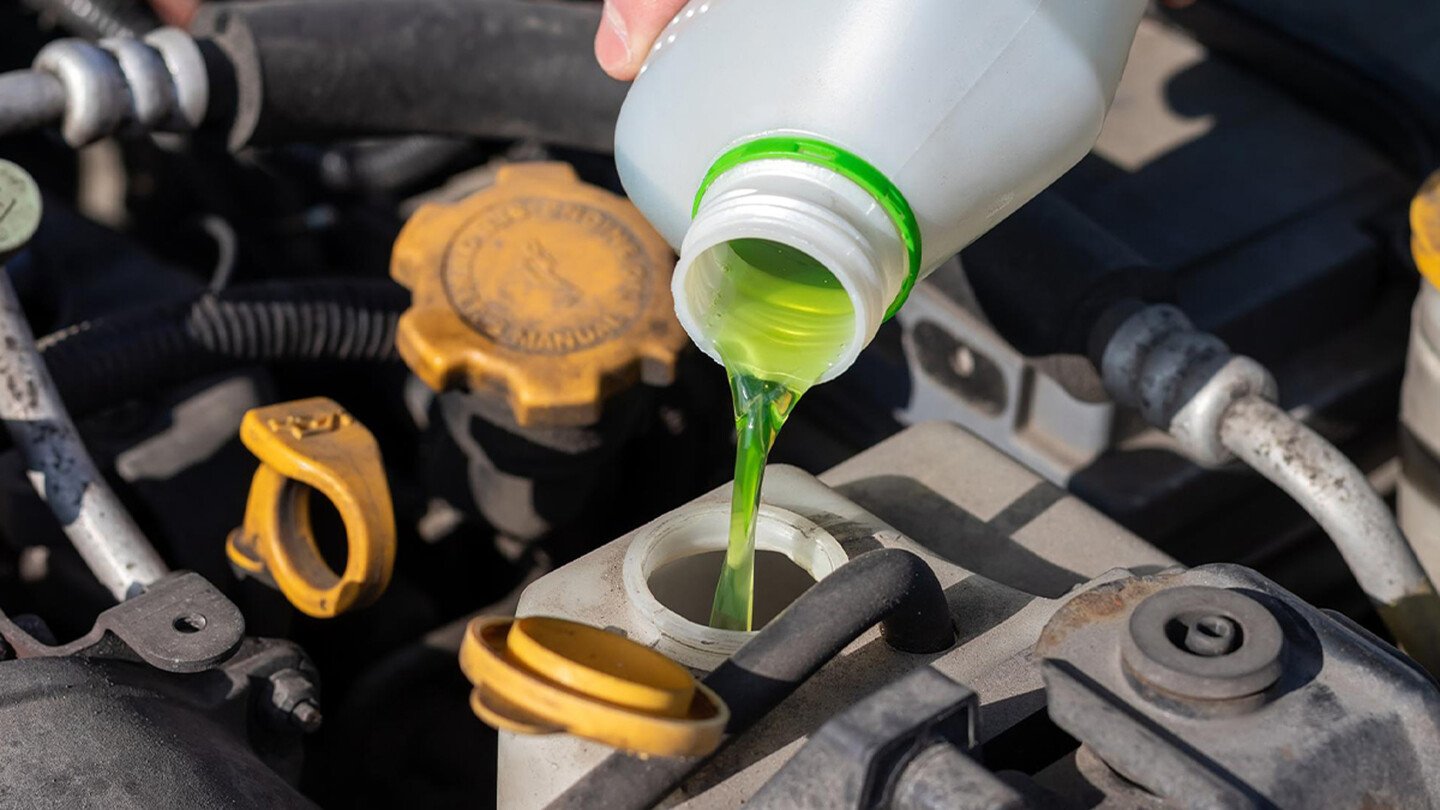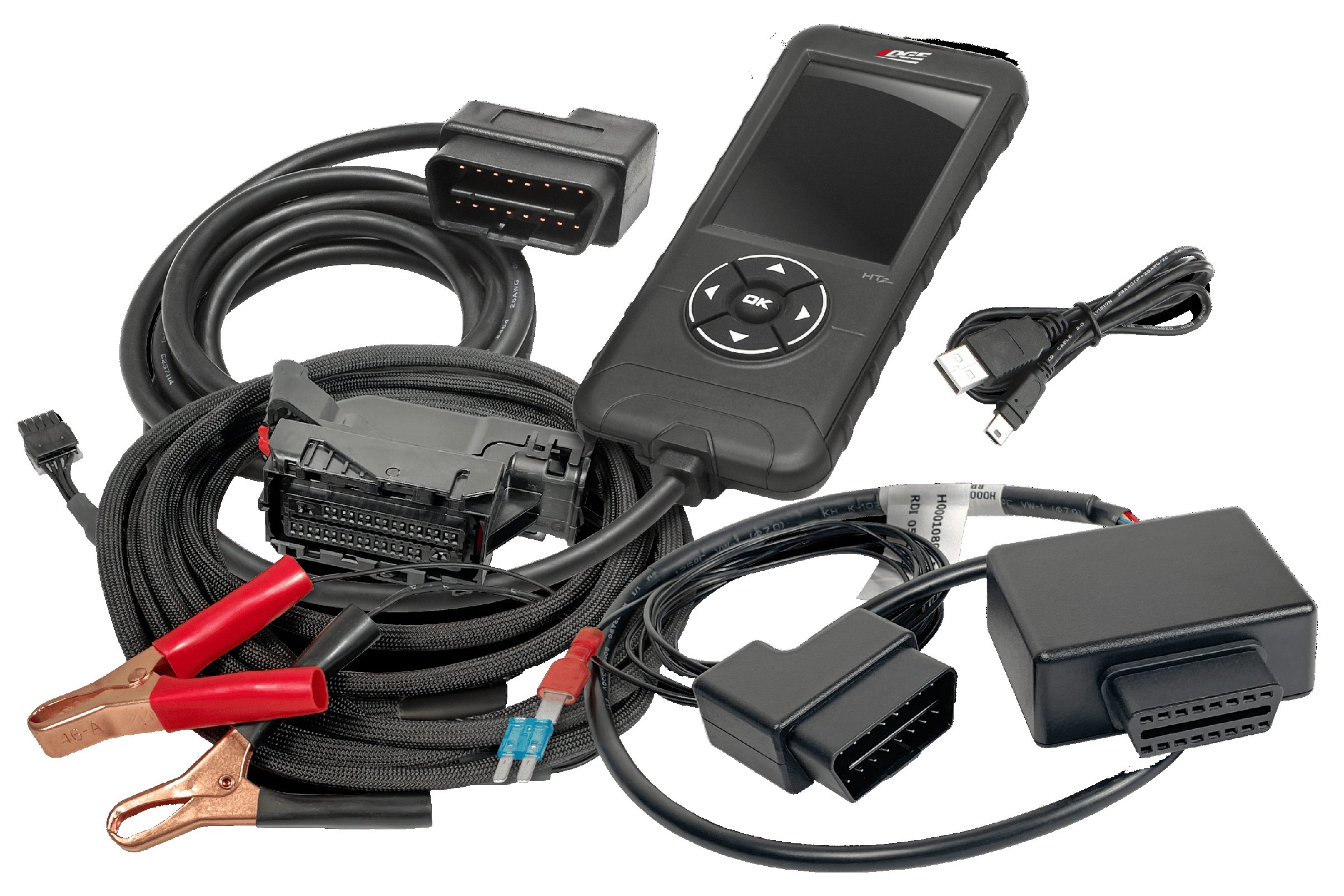It’s that time of the year once again; the leaves are falling off the trees and the air is getting much cooler every day. That means winter is almost here and it’s time to winterize your truck to make sure it is ready for those frigid morning starts. Whether you rely on your truck for work or to simply haul your toys around, ensuring it’s ready to go during harsh weather conditions such as freezing temperatures and snow-covered or icy roads should be a top priority on your to-do list.
It doesn’t take a lot of work to ensure your truck is ready. We reached out to the folks at Old World Industries (OWI) and Hot Shot’s Secret to get some solid information you can use to make sure your rig is winter-ready.
It goes without saying, proper maintenance is key to your truck’s longevity. But there are specific ways you can winterize that truck running smoothly throughout those chilly months that are fast approaching. With help from the folks at Old World and Hot Shot’s, I thought we should offer some guidance on the necessary steps required to winterize your truck to prepare it for cold weather conditions while ensuring the utmost in reliability and efficiency.

Adding antifreeze is not just a buy-it-and-pour-it proposition anymore. Compatibility issues are a major consideration when adding coolant to your truck.
Why You Need To Winterize Your Truck
It’s no secret that in many areas of the country, winter can be a trying time for all vehicles, but diesel trucks face a unique set of challenges. Sure, they are known for their power and efficiency when compared to gasoline-powered trucks, but diesel engines can be more problematic than gasoline mills when it comes to extreme cold.
When you winterize your truck, you are ensuring that the engine starts every time you turn the key or push the start button. A diesel engine that has not been prepared for the cold will experience hard starting when the temperature drops, or it might not start at all. Let’s begin by talking about the most well-known issue that plagues diesel trucks, and that is fuel gelling.

Adding a fuel additive year-round is always a good idea. However, adding an additive with an anti-gelling component is necessary during winter months.
Diesel fuel gels when the wax that is found in diesel fuel starts to crystallize. This gelling can occur at temperatures as high as 20 degrees Fahrenheit, depending on the quality of the fuel. Gelled diesel fuel will stop you in your tracks before you even start your engine as it clogs fuel lines and the filter(s). You’ll know you have a possible gelling issue when your diesel truck will not start, or it stops running during cold temperatures.
According to Hot Shot’s Secret, diesel is comprised of straight and branched-chain hydrocarbons, also called paraffin waxes. These become solid around 17.5 degrees Fahrenheit for #2 diesel. The amount of paraffin wax diesel contains depends on the kind of crude oil used to produce the diesel fuel and the process used to manufacture it. Also, biodiesel fuel which is required to be mixed with diesel fuel in many states adds to gelling. Biodiesel gels at higher temperatures than conventional diesel.
While gelled fuel can be turned back into a liquid, it is much easier to prevent it from ever becoming gelled. One method to keep fuel a liquid is to use a specially designed fuel additive such as Hot Shot’s Secret Diesel Winter Anti-Gel. This fuel additive offers protection down to minus 40-degrees Fahrenheit.
Keeping Your Cool From Freezing Or Boiling
According to PEAK, the proper mix ratio of water and antifreeze should be between a 60/40 and 50/50 antifreeze to water mixture. Further increasing the proportion of antifreeze 50/50 does not lower the freezing point. In fact, undiluted antifreeze actually freezes at around minus-9 degrees Fahrenheit and will not dissipate sufficient engine heat at temperatures above 32 degrees Fahrenheit.
The boiling point of glycol is very high, and the boiling point of a mixed coolant can be raised to up to 275 degrees Fahrenheit by using the right mixing ratio. Therefore, a sufficient antifreeze mixture is important, even in warm climates. As a reference, a coolant mixture of 50/50 will give you protection ranging from minus-34 to 265 degrees. A 60/40 mixture offers protection between minus 62 and 270 degrees.
Winterize So You Don’t Freeze
Some truck owners don’t give much thought to engine coolant. For many, the most attention it gets is when their truck overheats, and they have to add coolant. In reality, engine coolant has three functions: it lowers the freezing point of the cooling system in winter, it raises the boiling point of the cooling system in summer, and it protects the engine and cooling system from rust and corrosion year-round. If your truck’s cooling system is not topped off or refilled with the correct coolant, expensive problems could result.

Without a proper anti-gel additive in diesel fuel, extremely cold temperatures will cause diesel fuel to gel. This can start to occur at around 15 degrees Fahrenheit.
Old World Industries, the makers of Peak antifreeze have several variations of coolant which could cause confusion at the parts store. In older trucks, engine cooling systems were mostly made of brass, rubber parts, and cast iron, so engine coolants were basically all the same. These days, automobile cooling systems have parts made from copper, silicon, nylon, steel, and even magnesium and aluminum alloys. The type of coolant required by your vehicle can now vary by year, make, model, engine, and even the country where the car was made. With so many factors in play, car owners need to know which type of engine coolant is right for their vehicle.
IAT – Inorganic Additive Technology
For decades, this distinctive green-colored coolant protected cooling systems, but it is rarely used as factory fill in modern cars. One reason is the fast depletion rate of its additives, which means it has to be changed more frequently, usually every two years or 24,000 miles.
OAT – Organic Acid Technology
Commonly required for vehicles manufactured by General Motors, and some other automakers, OAT coolants are not compatible with other types. Usually orange, yellow, red, or purple, OAT coolants are typically changed every five years or 50,000 miles.
HOAT – Hybrid Organic Acid Technology
Providing the benefits of both IAT and OAT coolants, HOAT coolants are primarily orange and yellow and are common in Chrysler and Ford vehicles. OAT coolants are typically changed every five years or 50,000 miles, although some automakers specify intervals as long as 10 years or 150,000 miles.
If you are not sure which antifreeze your truck needs, PEAK has made it easy with its Antifreeze + Coolant Concentrate. This coolant is engineered to give your engine a lifetime of protection. This universal coolant can be used in all cooling systems for 10 years or 300,000 miles. It is compatible for use with any color or type of antifreeze/coolant in the system.
Winterize Your Truck: Taking Charge
Winterizing your truck does require more than just preparing your cooling system and fuel system for cold snaps. You also need to check the health of your batteries. Just because your truck has two doesn’t mean one can pick up where the other is lacking. And the cold of winter can exponentially worsen a battery that is on its last legs. Maintaining fully charged batteries is essential in ensuring that you don’t get stranded in your driveway before your day starts or worse, in a parking lot or along the side of the road.
Another way many truck owners combat cold-weather start concerns is by installing an engine block heater to help with those sub-zero mornings. A block heater not only keeps your engine from freezing — if you did not check your coolant — but by keeping it warm, it will start much easier and that means less strain on batteries and the starter. Another thing you might want to consider for your truck — especially if you do not use it every day — is a battery tender. This will ensure your batteries are fully charged every time you hit that start button.
Separate An Issue
While you are prepping your truck for those cold nights, you should probably consider changing your fuel filters as well. Most late-model trucks have a fuel/water separator under the bed and consistently making sure there is not a large quantity of water trapped inside is a good idea. If there is water in the separator, it can freeze and expand, causing the filter housing to burst. It only takes a couple of minutes to drain the water, and it’s easy enough that everyone needs to remember to do it.
DEFinitely Needs Attention When You Winterize
All late-model diesel trucks are now equipped from the factory with a diesel particulate filter (DPF). These are something that diesel owners did not have to concern themselves with in the winter until recently. But with the addition of the DPF, diesel exhaust fluid (DEF) has been added to the truck and this liquid can freeze. Using and storing DEF in cold climates can be challenging. This government-mandated exhaust fluid is made of a mixture of pure urea and purified water, and this mixture freezes at 11 degrees Fahrenheit.
DEF will expand up to seven percent when frozen and this will cause damage to a truck’s DEF-storage tank if it is kept full or nearly full when freezing temperatures hit. For that reason, keeping the DEF tank at or below half full when it gets frigid is a good idea as it allows for expansion. If DEF freezes in the vehicle, do not put any additives in the tank to help it melt. The fluid needs to remain pure for it to work correctly. Also, the DEF tank has a heater and will thaw the fluid. DEF is specifically formulated to allow the fluid to thaw at the proper concentration to keep your rig operating smoothly.
Getting your truck ready for those cold snaps is not a hard proposition, so now is a good time to winterize your rig for the temperature drops that will wreak havoc on your truck.






